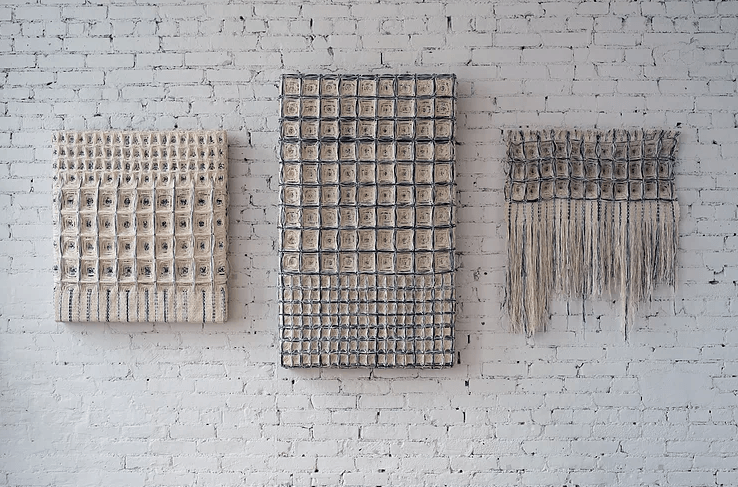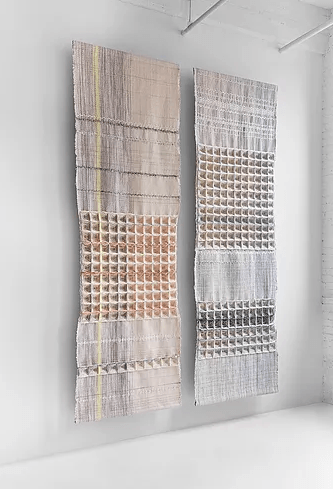In Conversation
-
NameHiroko Takeda
-
CraftTextile Artist
-
LocationJapan/New York
-
You blend traditional and experimental techniques. Can you speak to the influence of past and future on what you create in the present?
My background is in Japanese folk craft. I use certain tools, techniques, and practices that are traditional or even ancient. I am inspired by the work of unknown craftspeople of the past. The other day, I was looking at a book of old winter gear made with bast fiber by people in northern Japan. The beauty of the gear and the details amazed me. Every detail contributed to a function, such as protecting the body while working, or traveling in heavy snow, or pulling a net from the ocean. The beauty emerged from the purpose and the purpose, in many ways, created the beauty.
When I create a new work the concept comes first. I believe that the work should have a soul and not simply show off a certain technique. I want to express something present, what I feel now. Weaving takes a long time and the final result doesn’t come immediately, but each step of the process is an opportunity to decide where to go next.
-
What are some of your favorite rituals?
In my studio in Brooklyn, my staff and I take off our shoes which is a Japanese tradition. We also clean the floor with a cloth just like I did in elementary school. It helps keep the studio clean, but it’s also a way of showing our respect to the spirit of the space and appreciation for everyday life.
My favorite religious rituals happen toward the end and the beginning of the year. I like the solemn atmosphere of the period called nenmatsu/nenshi—nenmatsu is the end of the year and nenshi is the beginning. Those are the times when I feel my roots and culture most. There are Buddhist and Shinto rituals for reflecting on the past, cleansing your spirit, and preparing your mind to be fresh for the months ahead.
Another favorite ritual is in August as that’s when we believe the souls of our ancestors return home. Every family visits their cemetery, cleans it, puts out food and flowers, and prays. At night, in my family’s region, we make a small fire outside of the entrance of the house so that the ancestors can find their way. When I was a child I spent summers with my grandparents in Yamadera, a village in northern Japan where we made the fire in total darkness. We could hear the river and insects and sometimes a train passing near echoing in the valley. Yamadera is famous for cliff temples and there is a path with steps to the top of a mountain with shrines and temples along the way. I used to climb those steps every morning. I can’t climb those steps or make the August fire here in New York, but those rituals are still very memorable for me.
-
What drives you to continue creating and how do you overcome blocks?
Ever since I was little I’ve liked using my hands to make things. Whenever we took a family trip my sister remembers that I always brought materials with me—colored pencils and a sketchbook, or a crochet set, or something else. I guess I’ve always liked making things.
If I am stuck I try to think of all the possibilities. At some point, I’ll see a passage that may or may not lead me somewhere. I don’t know until I try.
Weaving is a bit like climbing a mountain. I’m climbing toward something I can see in my mind but haven’t seen in reality yet. When there is an obstacle of any kind, if I think about it later, I realize that it was an opportunity to go to the next stage. That is the pleasure of the work.


